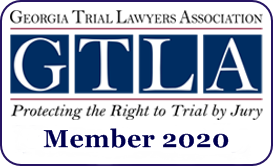
When a person is injured due to the negligence of another party, this does not automatically mean that they can file a lawsuit against the negligent party. In order to file a compensation claim that will be taken seriously in court, there has to be sufficient evidence to show that negligence was a factor. There are many instances when an injury caused by someone else may not be a result of negligence. For example, if you have a brain tumor which needs to be removed, the neurosurgeon may tell you that during the surgery injury to the normal tissues may not be avoidable. If after surgery, you cannot move your right hand or have difficulty speaking, you can’t sue the surgeon.
There are four key elements that make a personal injury claim credible. These include:
- Duty of care: The main premise of a personal injury case is the establishment of a duty of care. This means that a person can be held accountable for their actions if they were expected to demonstrate a duty of care. If they fail to do so, and if somebody is injured or harmed, a case for personal injury can be filed. For example, a dog owner must have their dog on a leash while on public property; if the dog is not on a leash, and if the dog bites someone, the injured party can file a claim because there is an absence of a duty of care on the part of the owner. Another example is that when there is a stop sign on the road, all drivers are expected to come to a full stop. If they don’t and they hit a pedestrian, they can be held accountable. Talk to an Atlanta personal injury lawyer for more information in this regard.
- Breach of duty: While the first thing is to establish that a duty of care is expected, the next important thing is to prove that there was a breach of this duty. For example, after a snowstorm, a homeowner is expected to clean up the paths within 24-48 hours, depending on the local county rules. If you are walking near the owner’s home 3 days later, slip on the ice and break your wrist, the homeowner did not exercise the duty of care by removing the ice in a timely manner. The breach is evident since the snow/ice was not removed. The duty of care also applies to medications, food, and many other products.
- Proof of injury: The third part of a personal injury claim is the presence of an emotional and/or physical injury or economic loss. For example, you are prescribed a medication for your blood pressure by your physician. When you go to the pharmacist, you are mistakenly given medication for a headache. You take the medication but suffer no ill consequences. Since you did not suffer any injury, there is usually no case. In all personal injury cases, you need to have some type of documented injury. A near miss is not enough to win a lawsuit. Also, making a claim that you were harmed or injured is different from proving you actually have injuries. There is no case if you can’t prove it.
- Causation: Another very important element of a personal injury claim is for your Atlanta personal injury lawyer to show that there was a connection between the breach of duty and the resulting injury. Your Atlanta personal injury lawyer needs to prove to the court that the actions of the defendant were directly responsible for the injuries.
Contact an Atlanta Personal Injury Lawyer
If you have injuries and you want to seek compensation, you can file a claim, but you must speak to an Atlanta personal injury lawyer to determine if you have a case. It is important to ensure all elements are in place so that there are no surprises later. Call an Atlanta personal injury lawyer at Cain Injury Law. Our lawyers can give you feedback related to the credibility of your claim based on the information you provide. It is best to proceed knowing where you stand. Call the personal injury attorneys at Cain Injury Law to find out if you can file for compensation for any injuries or damage that you may have sustained.

Clayton Cain approaches each case with a mindset similar to one that earned him recognition as a collegiate All-American, on the baseball field and in the classroom. with Preparation, Persistence, and Production.









 Site by Consultwebs.com: Personal Injury Law Firm Website Designers/Lawyer Marketing.
Site by Consultwebs.com: Personal Injury Law Firm Website Designers/Lawyer Marketing.